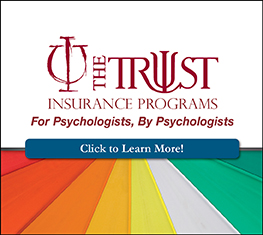The professional home for health service psychologists.
Join a community of 15,000 psychologists and trainees.
Learn it today. Apply it tomorrow.
Connecting you to what you need in your career.
Making a difference.
Health care providers are facing increased risk of moral distress during the COVID-19 pandemic because of changes in clinical practice and resource allocation procedures. Health care systems that employ a proactive approach in mitigating the lasting effects of moral distress will fare better in the long run. Psychologists are well poised to apply timely psychological first aid to the crisis needs of patients, colleagues, and even themselves. Key interventions are detailed, including creating and promoting safety, calmness, connectedness, self-efficacy, and hope.
Access continuing education course on CE.NationalRegister.org
Brymer, M., Jacob, A., Layne, C., Pynoos, R., Ruzek, J., Steinberg, A., Vernberg, E., & Watson, P. (2006). Psychological first aid: Field operations guid (2nd ed.). National Child Traumatic Stress Network and National Center for PTSD. Retrieved from https://www.nctsn.org/resources/psychological-first-aid-pfa-field-operations-guide-2nd-edition
City of Chicago. (2020, April 6). Latest data. Retrieved from https://www.chicago.gov/city/en/sites/covid-19/home/latest-data/2020-04-06.html
Epstein, E., & Hamric, A. (2009). Moral distress, moral residue, and the crescendo effect. Journal of Clinical Ethics, 20, 330–342.
Glueck, D. (2013). Establishing therapeutic rapport in telemental health. In K. Myers & C. L. Turvey (Eds.), Telemental health: Clinical, technical, and administrative foundations for evidence-based practice (pp. 29–46). Elsevier.
Hempel, S., Taylor, S. L, Marshall, N. J., Miake-Lye, I. M., Beroes, J. M., Shanman, R., Solloway, M. R., & Shekelle, P. G. (2014). Evidence map of mindfulness. VA-ESP Project #05-226. Health Services Research & Development Services, Department of Veterans Affairs.
Jameton, A. (1984). Nursing practice: The ethical issues. Englewood Cliffs, NJ: Prentice-Hall.
Litz, B. T., Stein, N., Delaney, E., Lebowitz, L., Nash, W. P., & Silva, C. (2009). Moral injury and moral repair in war veterans: A preliminary model and intervention strategy. Clinical Psychology Review, 29, 695–706.
Norcross, J. C., & VandenBos, G. R. (2018). Leaving it at the office: A guide to psychotherapist self-care (2nd ed.). New York: Guilford Press.
Nouwen, H. J. M. (2010). The wounded healer (2nd ed.). New York: Image Doubleday.
Pandemic Influenza Ethics Initiative Work Group of the Veterans Health Administration’s National Center for Ethics in Health Care. (2010, July). Meeting the challenge of pandemic influenza: Ethical guidance for leaders and health care professionals in the Veterans Health Administration. Retrieved from https://www.ethics.va.gov/docs/policy/meeting_the_challenge_of_pan_flu_ethical_guidance_vha_2010_web_posting_2013.pdf
Sammons, M. T., VandenBos, G. R., & Martin, J. (2020). Psychological Practice and the COVID-19 Crisis: A Rapid Response Survey. Journal of Health Service Psychology, 46, yyy–zzz.
Shay, J. (2014). Moral injury. Psychoanalytic Psychology, 31, 182–191. https://doi.org/10.1037/a0036090
Copyright © 2025 All rights reserved. National Register of Health Service Psychologists








